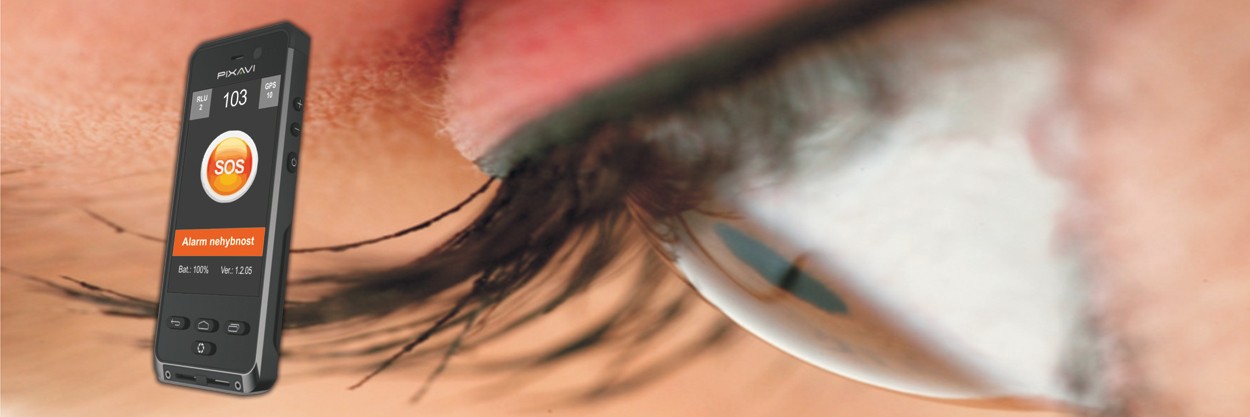Architecture of a variant 0 - completely free of detectors
In this variant, the system have no detectors. Mobile phones with RLH-mobile app locally evaluate the state of a person (mobile phone holder) with parameters configured in the app. In case of an alarm situation (immobility, free fall, SOS, etc...), the mobile phone triggers an alram. Mobile phones regularly communicate with the RLU central unit via GSM/GPRS network and send it information about person's location according to GPS coordinates, and also alarm messages from RLH-Mobile app.

Architecture of A variant - RBT-02 detectors (BlueTooth) (powered from adapter)
RBT-02 detectors require to be powered by 7-28 V DC power supply. RBT-02 detector's relay indicates the functionality of a detector's BlueTooth chip. The relay is closed in a normal operation and it doesn't open until there is a failure of the BlueTooth chip or failure a of the entire detector. The output of this relay may be connected to logic inputs of RLQ expander, which detects the functionality of RBT detectors.

Architecture of B variant - RBT-03 detectors (BlueTooth) (powered by batteries)
RBT-03 detectors are powered by batteries, which have capacity for more than 1 year of nonstop operation. Detectors periodically transmit BlueTooh "beacons" up to range of about 10 m, depending on obstacles. The mobile phone that detects an alarm state also sends an information about the detector that has this phone in its range, via GSM/GPRS channel to a central unit. Very easy installation. In case that a BlueTooth chip in the module doesn't work, the processor closes a fault output, where a LED indicator or a siren is connected.

Interconnection of FLM monitoring units
FLM monitoring unit can communicate optionally with the central unit either via Ethernet (within LAN network), or via RS485 bus, which also serves for a distribution of power to all modules. The RLU central unit is only one, and forms the heart of the entire system. The Merya RTLS system requires no computer or software at the installation site. All modules operate as embedded. This fact guarantees very high stability and independent functioning of the entire system!

All three basic architecture variants "0", "A", and "B" may work at single system in a hybrid mode.




